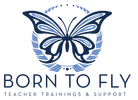|
The growth of a teacher is a fascinating process to witness. Having observed many teachers, I’ve noticed some common trends in the way teachers progress in their practice. For simplicity and the sake of this article, I have divided the growth process into 4 phases.
Phase I: Beginning Where they are: The brand new teacher may format classes a bit randomly at first. Warm-ups might not connect to the goal for the day, and there may not even be a theme. A teacher who is new to either the material or the process of teaching may hesitate to be an authority figure, or they may try to teach things they really don’t understand in an effort to impress. They gradually become aware that becoming a strong teacher is a long process. It involves observing, assisting, practicing on one’s own, cueing colleagues through sequences, studying each skill in-depth, and teaching a ton. How to move forward: A teacher in this phase needs structure. They should take and observe more classes, and pay attention to how other teachers structure the learning experience, cue, and respond to students’ needs. It’s important to realize that teaching is a completely different skill set from having a large aerial vocabulary. Teaching involves understanding the body, mind, and heart. Phase II: Emerging Where they are: This teacher may have been teaching for a short while, and is still getting the hang of things in terms of goals and theming. They may have a clear beginning, middle and end in their classes, but feel like they are only one step ahead of their students. Sometimes, stepping into the role of authority figure results in dogmatism (this way is the only right way). An emerging teacher might expect students to perform all skills in exactly the same way, and not understand why their small batch of cues don’t work for everyone. They might also expect every student to learn in the same way. This teacher’s cues are usually based on personal experience of each skill, but they may not necessarily see each student as a unique body/being just yet. How to move forward: A teacher in phase II needs to observe many, many different bodies moving in the air. Even people-watching at malls and airports can be enlightening. It’s important to recognize that different bodies require different alignment, cueing, and so forth. Learn to treat each student as a unique individual not just in their movement, but also in their mental processing and emotional landscape (while still maintaining clear boundaries). This teacher should search for new ways to teaching old stuff. Studying anatomy, kinesiology, and even educational psychology can also help. Finally, collecting images and cues from other knowledgable instructors will support this teacher’s ability to work with diverse movers and learners. Phase III: Expanding Where they are: This teacher has likely been teaching movement for an extended period of time. They modify and adjust class content based on the unique bodies and minds in the room. They can easily focus on proper alignment because of their knowledge of the body and their ability to move around the room while cueing and spotting. It’s possible that this teacher is getting bored or burnt out because they have a consistent routine, and they don’t know how to grow from here. How to move forward: A teacher in phase III could explore new teaching methods that are outside of their norm (i.e. using global methods, puzzles, etc. instead of always teaching linearly). They might benefit from a deeper study of anatomy, kinesiology, developmental movement, and other movement practices to carry new information back into the aerial studio. Learning to cross-pollinate aerial classes with other movement forms can provide a breath of fresh air if classes are becoming stale. Advancing one’s technique and vocabulary as far as possible is a great goal, but studying the theory behind aerial work may be even more powerful because it leads to invention. And if the teacher understands how skills are invented, then that process can be taught to students also. Then every class will bring out something new and unique. Phase IV: Innovating Where they are: This teacher is evolving the form through experimentation with various teaching methods and the invention of skills. They carefully weigh the benefits and drawbacks of different movement training systems, and make appropriate choices based on their findings. This teacher focuses on efficient movement patterning (working smarter, not harder) by emphasizing proper alignment, movement phrasing, initiation and follow-through. They appropriately challenge their students, but also encourage rest when it is needed. How to move forward: If the phase IV teacher has become caught up in training elite level aerialists, they should remember what it’s like to be a beginner. This teacher could find ways of viewing the most basic skills in a completely different (or deeper) way for a change in perspective. Or, this teacher might finally pursue the pet project they’ve always wanted to but never had time before. Studying another movement form or enlisting a teacher for oneself can also be powerful at this stage. Most importantly, this teacher must remember why they teach in order to sustain their career. Comments are closed.
|
AuthorsOur authors include our Master Teacher Trainers as well as Born to Fly™ Certified Teachers. Archives
February 2019
Categories
All
|
|

 RSS Feed
RSS Feed